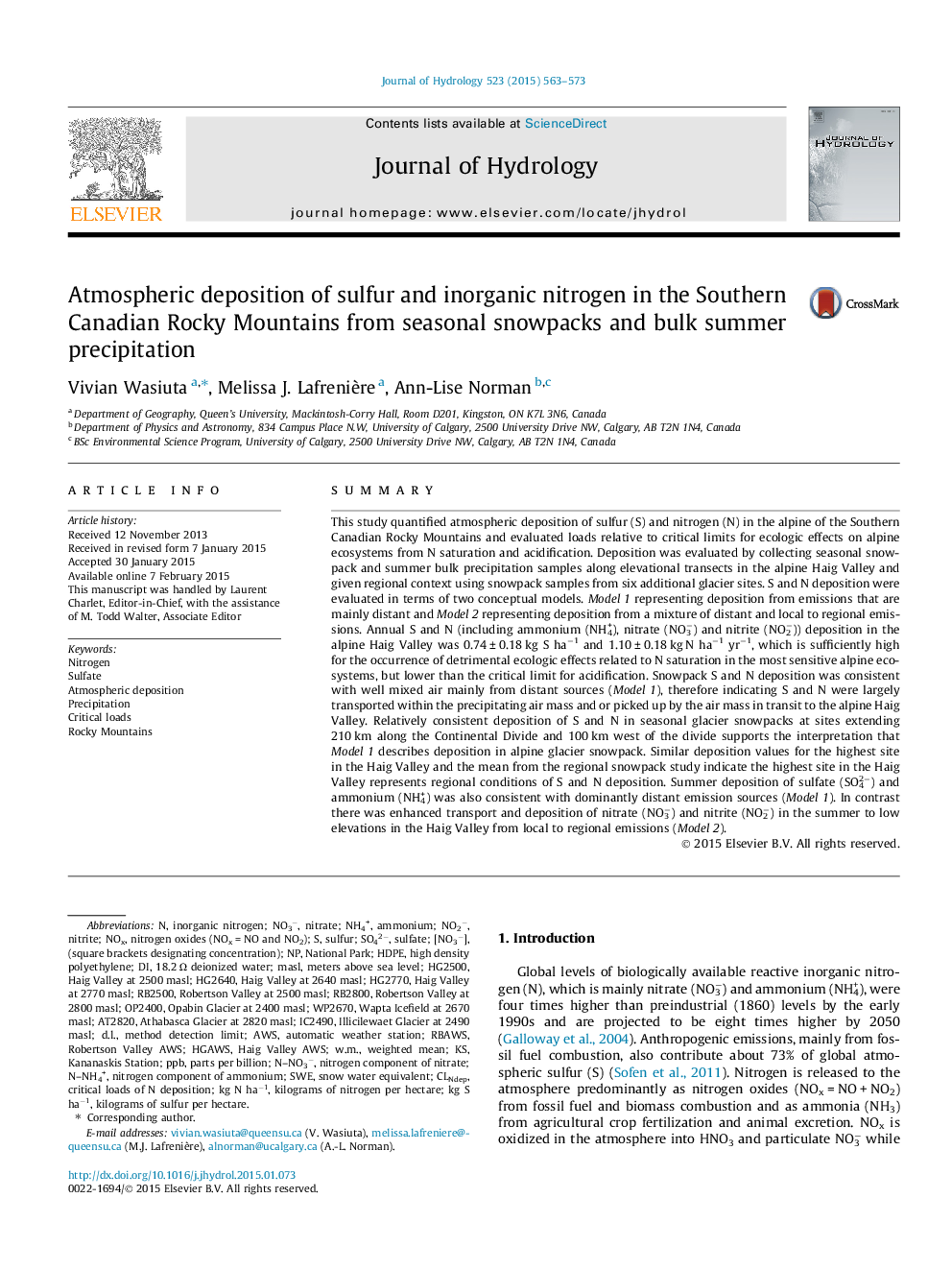| Article ID | Journal | Published Year | Pages | File Type |
|---|---|---|---|---|
| 6411752 | Journal of Hydrology | 2015 | 11 Pages |
â¢Robust estimates of annual S and N atmospheric deposition presented.â¢High elevation sites represent dominantly long range transport.â¢Low elevation sites overprinted with NO3â & NO2â from local to regional emissions.â¢N saturation a concern for most sensitive alpine sites.
SummaryThis study quantified atmospheric deposition of sulfur (S) and nitrogen (N) in the alpine of the Southern Canadian Rocky Mountains and evaluated loads relative to critical limits for ecologic effects on alpine ecosystems from N saturation and acidification. Deposition was evaluated by collecting seasonal snowpack and summer bulk precipitation samples along elevational transects in the alpine Haig Valley and given regional context using snowpack samples from six additional glacier sites. S and N deposition were evaluated in terms of two conceptual models. Model 1 representing deposition from emissions that are mainly distant and Model 2 representing deposition from a mixture of distant and local to regional emissions. Annual S and N (including ammonium (NH4+), nitrate (NO3â) and nitrite (NO2â)) deposition in the alpine Haig Valley was 0.74 ± 0.18 kg S haâ1 and 1.10 ± 0.18 kg N haâ1 yrâ1, which is sufficiently high for the occurrence of detrimental ecologic effects related to N saturation in the most sensitive alpine ecosystems, but lower than the critical limit for acidification. Snowpack S and N deposition was consistent with well mixed air mainly from distant sources (Model 1), therefore indicating S and N were largely transported within the precipitating air mass and or picked up by the air mass in transit to the alpine Haig Valley. Relatively consistent deposition of S and N in seasonal glacier snowpacks at sites extending 210 km along the Continental Divide and 100 km west of the divide supports the interpretation that Model 1 describes deposition in alpine glacier snowpack. Similar deposition values for the highest site in the Haig Valley and the mean from the regional snowpack study indicate the highest site in the Haig Valley represents regional conditions of S and N deposition. Summer deposition of sulfate (SO42â) and ammonium (NH4+) was also consistent with dominantly distant emission sources (Model 1). In contrast there was enhanced transport and deposition of nitrate (NO3â) and nitrite (NO2â) in the summer to low elevations in the Haig Valley from local to regional emissions (Model 2).
